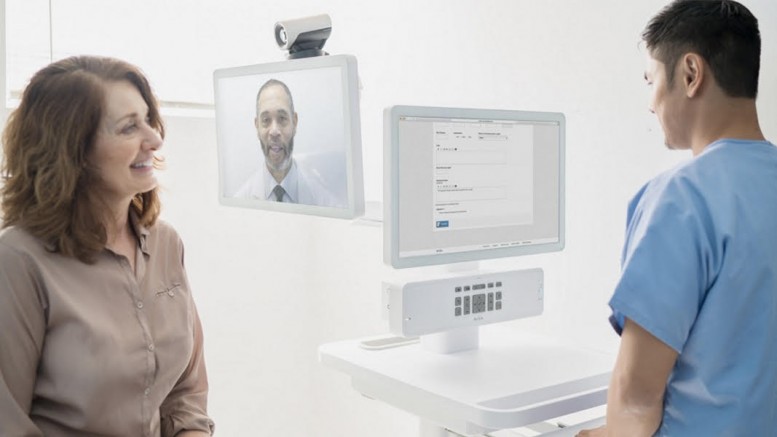Despite a ‘booming’ healthcare industry, implementation costs and reimbursement challenges stall telehealth adoption for hospitals and physician groups
Avizia, a leading telehealth solution provider, and Modern Healthcare Custom Media, the research division of Modern Healthcare, today announced the findings from their national telehealth survey. The report, “Closing the Telehealth Gap,” surveyed more than 280 healthcare leaders from U.S. hospitals, physician groups, ambulatory centers and other healthcare groups, and exposed a major disconnect between how healthcare providers currently use telehealth versus how they want to use the technology.
According to the findings, the most common service lines using telehealth today include stroke (44 percent), behavioral health (39 percent), staff education and training (28 percent), and primary care (22 percent). However, when executives look to the future, patient education and training lead the wish list (34 percent), closely followed by remote patient home monitoring (30 percent) and primary care (27 percent).
While past reports have cited consumer adoption as a top barrier to telehealth usage, these new findings show the main obstacle for healthcare providers remains centered around cash flow—without enough to fund the technology, or enough potential revenue to justify an expense. The top two barriers, encountered by about half of organizations, are the necessary investments for telehealth technology and infrastructure (50 percent) and issues related to reimbursement (48 percent).
“As a clinician and a telehealth advocate I empathize with the battle going on in our system today. Hospitals and doctors know where they need to go, and they ultimately know what is best for their patients, but costs and reimbursement challenges have inhibited their ability to move forward,” says Dr. Alan Pitt, Chief Medical Officer at Avizia and attending physician and Professor of Neuroradiology at the Barrow Neurological Institute.
“Getting hospitals, physicians, health plans and telehealth companies on the same page will be critical to moving healthcare forward and improving public health,” said Pitt. “We talk a lot about collaboration in healthcare between the payers and providers, but in order to truly deliver on the promise of value-based-care, it’s clear that technologists need to be a part of the business conversation.”
Overall, the report found 72 percent of U.S. hospitals are currently using telehealth, compared to 52 percent of physician groups/clinics. The most popular use of telehealth is through a computer workstation on wheels or ‘tablet on a stick’ with 40 percent of responding organizations reporting usage. The future, on the other hand, looks entirely different, with executives most wanting their organizations to implement video visits through the electronic medical records system (EMRs), and adopting mobile apps for provider-to-provider and patient-to-provider communications.
Other findings in the report include:
- Healthcare providers in large states (population 8 million to 14.9 million) are the least likely among all state groups to use telehealth
- Small states are the most likely to encounter regulatory issues
- Physician practices and clinics have more trouble with maintenance and ongoing support for the technology than hospitals and health systems
When it comes to what drives telehealth adoption, healthcare professionals appear to have different, but not surprising motives. Those in senior management, including CEOs, presidents and administrators, believe more than all other groups that meeting value-based care goals and expanding service lines are driving their organizations to pursue telehealth. Those in information technology management are reportedly more focused on revenue drivers—reaching new patient populations, increasing revenue and lowering operating costs were all top drivers for this group. Clinicians, not surprisingly, believe telehealth is most driven by improving clinical outcomes.
“We live in an age where we want everything to be easy, safe and effective. When we access our health services we essentially want the same experience as buying a pair of running shoes on Amazon or Face Timing a friend. But, when it comes to our health, the stakes are much, much higher. Providing remote access to care and information can mean the difference between life and death,” says Avizia CEO and Co-Founder Mike Baird.
“To get the best tools into the right hands, we all have to come to the table and work to create solutions that fit the unique needs of our healthcare system, and that is what we do at Avizia every day,” said Baird. “That means working with EMR providers and healthcare decision-makers to ensure our technology works effectively, integrates with their technology, and helps patients better manage their conditions so we can lower costs in the system overall.”
The “Closing the Telehealth Gap” report was conducted by Avizia and Modern Healthcare Custom Media in March 2016. To read the full report and findings please visit https://www.avizia.com/research-report-closing-telehealth-gap.

